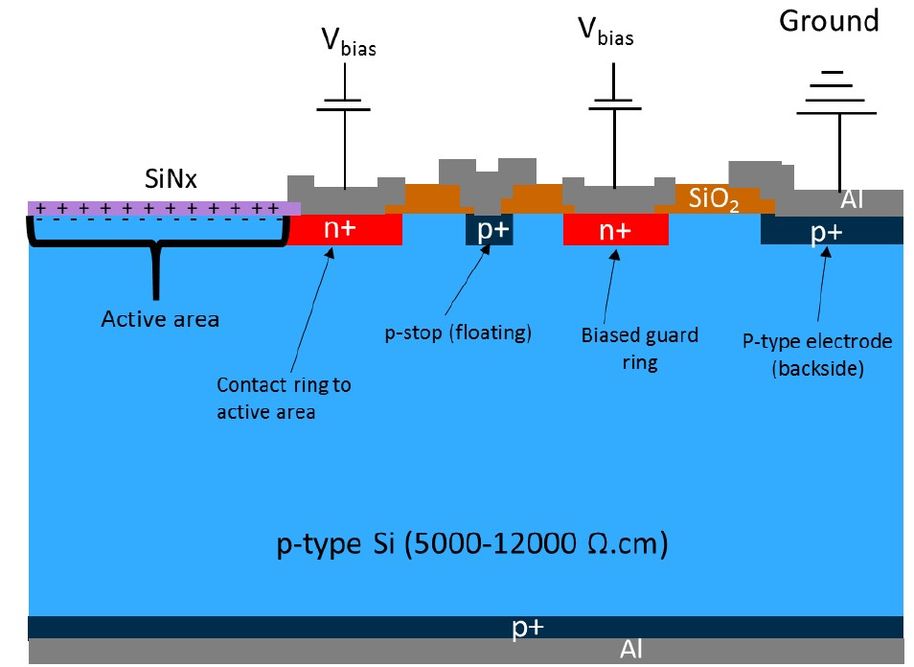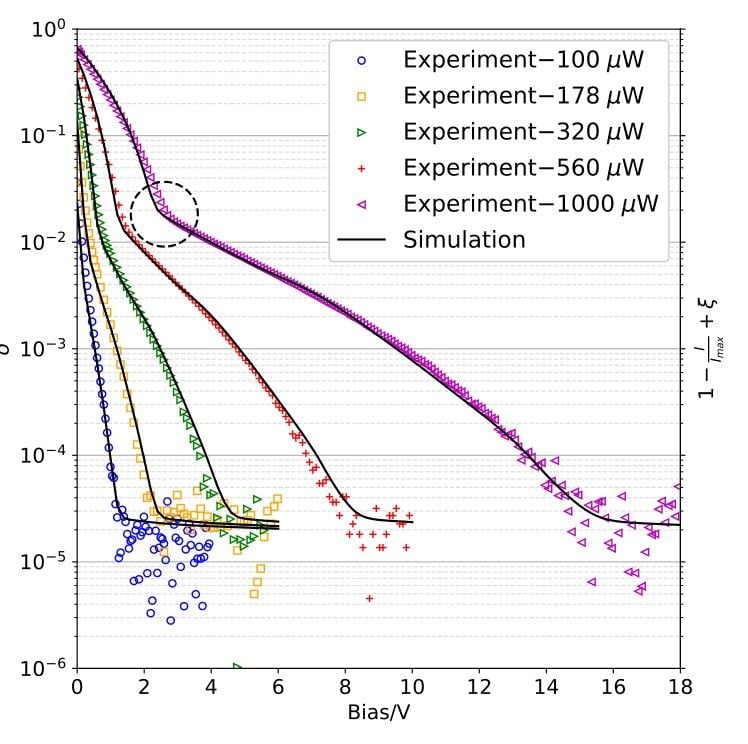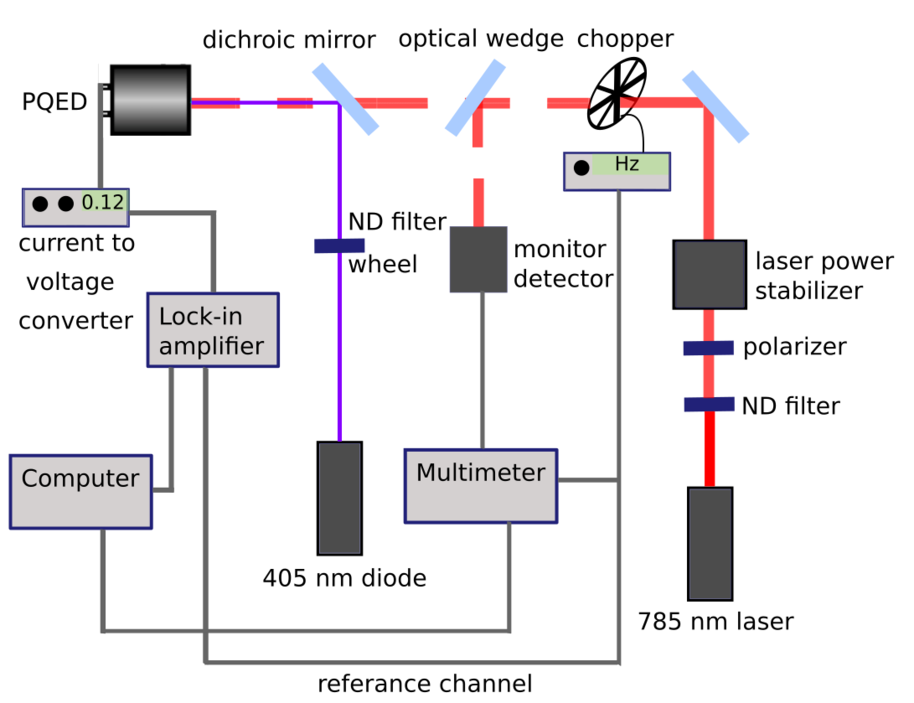chipSCALe (2019-2022)
The aim of this project coordinated by Justervesenet, Norway, was to develop a more robust linkage to the revised SI candela for optical power measurements. An improved and simplified traceability chain is vitally important for spectrally resolved measurements in photonics across industry and science. Using today’s methods, the uncertainty on measurements of optical quantities is limited by the properties and insufficient stability of current silicon transfer standard detectors, as well as costs of operation and required expertise for use of primary standards based on cryogenic electrical substitution radiometer (ESR). The novel combination of two independent primary standard detectors: a solid-state predictable quantum efficient detector (PQED) and ESR was used to create a robust link to the revised SI by measuring the fundamental constant ratio e/h. The novel packaging of the two standards could also facilitate improved dissemination of optical quantities, particularly where a primary standard needs to be used in challenging non-NMI environments, generating for the first time an “NMI-on-a-chip” for optical power measurements.

The project was split into four technical work packages. In work package one, in which the Metrology Research Institute was a key partner, the aim was to develop and validate improved 3D models of the internal quantum efficiency (IQD) of induced-junction photodiodes at room and cryogenic temperatures with an uncertainty of 10 % of the IQD value. These improved models were applied to new induced junction-photodiodes manufactured in the project (Figure 1).
In this project, the Metrology Research Institute has, in collaboration with other European National Metrology Institutes (NMIs), measured the current-voltage characteristics (or IV-curves shown in Figure 2) of the new induced-junction photodiodes developed in this project [1] and also in the earlier NEWSTAR and qu-Candela projects [2]. MRI, together with other partners, covered the entire visible wavelength range in these measurements. The effect of the power level of the incident optical radiation is also studied. The results from these measurements are used to create a model fit and thus extract the key parameters of the photodiodes, such as surface charge, surface recombination velocity, and carrier lifetime [2]. These key parameters are used to predict the IQD.

MRI investigated the optical deactivation of induced-junction photodiodes by double-color radiometry (Figure 3). The idea of the double laser radiometry technique is to use two laser sources simultaneously: a near-infrared laser as a source of measured signal and a blue laser for deactivating the recombination centers at the photodiode surface, because of the smaller penetration depth of the blue laser. However, within the measurement uncertainty of 0.2 % the deactivation effect was not observed [3].

Furthermore, we have determined experimentally the internal quantum efficiency of a 3-element trap detector made of Hamamatsu S1337 photodiodes and of a PQED over the wavelength range of 250 nm – 550 nm using an electrically calibrated pyroelectric radiometer (ECPR) as reference detector. The PQED is made of specially designed induced junction photodiodes, whose charge-carrier recombination losses are minimized. The determined internal quantum efficiency of PQED is always 1 or larger, whereas the 3-element trap detector has internal quantum efficiency smaller than 1 in the spectral range of 330 nm – 450 nm. This finding demonstrated the advantages of PQED photodiodes for studying the quantum yield due to impact ionization by charge carriers in the silicon lattice [4, 5]. For this purpose, we developed an extrapolation model for the charge-carrier recombination losses of the PQED, which allowed us to separate the quantum yield from the measured internal quantum efficiency. Measurements of PQED spectral responsivity thus allowed to determine the quantum yield in silicon, which can be further used for quantifying the charge-carrier recombination losses in the 3-element trap detector. Numerical values of the latter are from 6 % to 2 % in the spectral range from 250 nm to 380 nm. Finally, our results are encouraging for the aim of developing the PQED to a primary detector standard also at UV wavelengths.
Further information about the project and its structure can be found at chipscale.aalto.fi.
References
1 Koybasi, O.; Nordseth, Ø.; Tran, T.; Povoli, M.; Rajteri, M.; Pepe, C.; Bardalen, E.; Manoocheri, F.; Summanwar, A.; Korpusenko, M.; Getz, M.N.; Ohlckers, P.; Ikonen, E.; Gran, J. High Performance Predictable Quantum Efficient Detector Based on Induced-Junction Photodiodes Passivated with SiO2/SiNx. Sensors 2021, 21, 7807. https://doi.org/10.3390/s21237807
2 Tran T, Porrovecchio G, Smid M, Ikonen E, Dönsberg T and Gran J 2022 Determination of the responsivity of a predictable quantum efficient detector over a wide spectral range based on a 3D model of charge carrier recombination losses Metrologia 59 045012
3 M. Korpusenko, F. Manoocheri, E. Ikonen, Double laser radiometry for study of detector linearity. Proc. of NEWRAD, 2021, 23-24. DOI: 10.5281/zenodo.4882794;
4 M. Korpusenko, A. Vaskuri, F. Manoocheri, and E. Ikonen, ”Impact ionization in silicon at low charge-carrier energies,” AIP Advances 13, 085119, 2023, DOI: https://doi.org/10.1063/5.0164405
5 M. Korpusenko, A. Vaskuri, F. Manoocheri, and E. Ikonen, ”Internal quantum efficiency of silicon photodetectors at ultraviolet wavelengths,” Metrologia 60, 055010, 2023, DOI: https://doi.org/10.1088/1681-7575/acf5f0
- Published:
- Updated: